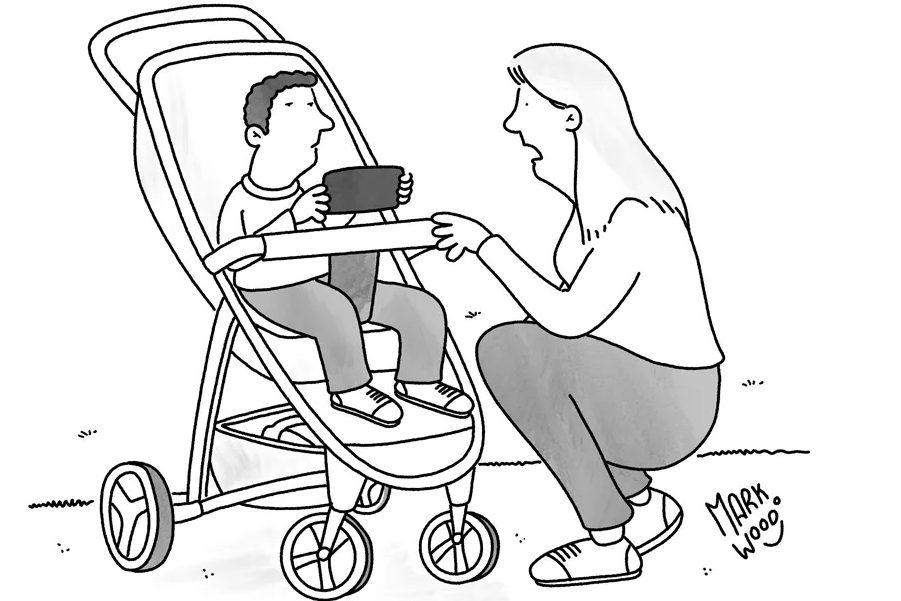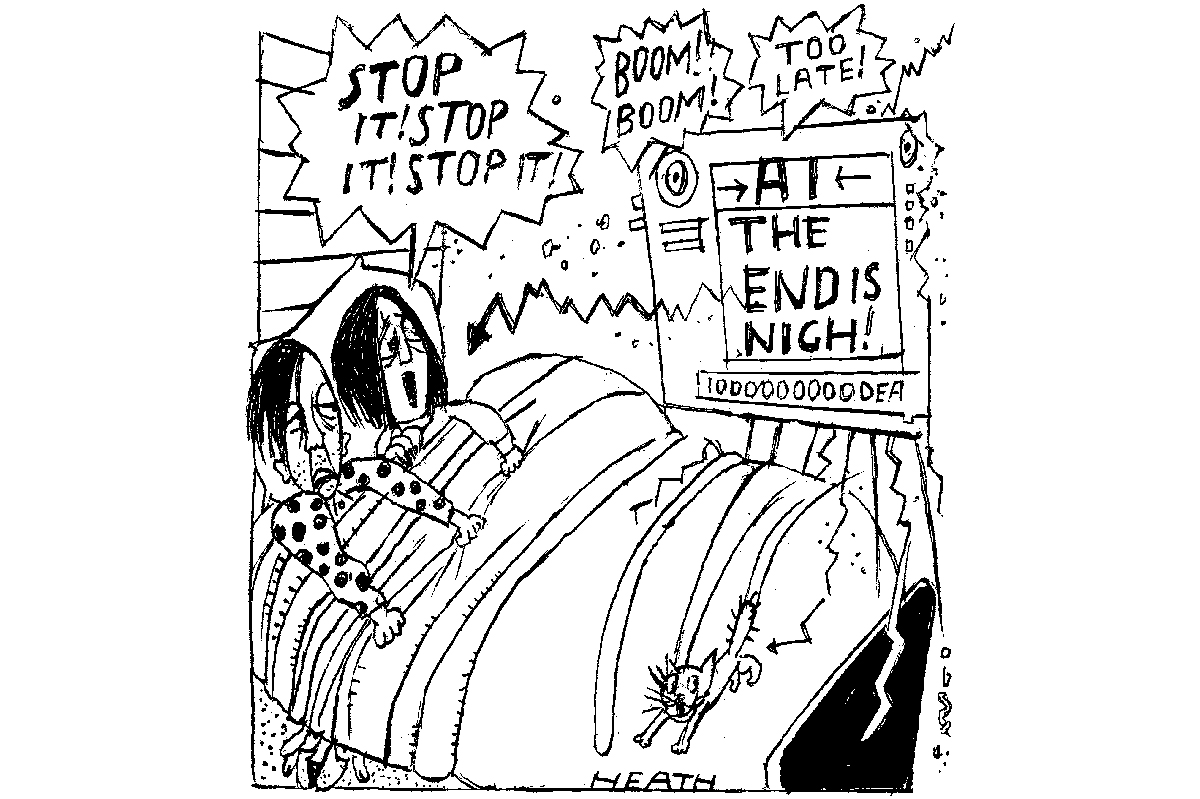If you want to make your name in psychiatry, find a problem, identify a plausible one-factor solution, and then offer a big fix at low cost. And provided you can make at least some of the sums add up, even editors of academic journals will find it hard to resist.
I was first offered this tongue-in-cheek advice on the threshold of a lifetime in academic psychiatry over four decades ago. But the idea of the one-factor solution has never been particularly attractive to me. After all, over the first half of the last century, the lure of a surgical solution to mental health ailments scarred the lives of tens of thousands of patients who were subject to brain lobotomies. The same problem — good intentions but bad science — drove the over-use of electro-convulsive therapy (ECT) and, more recently, rocketing prescriptions for the latest pharmaceutical remedies. The scandalous use of puberty blockers may yet turn out to have been the latest intervention fueled by our need for the big fix.
Add in the replication-crisis engulfing the behavioral sciences right now (many study findings reported with great fanfare don’t hold up when other researchers try to repeat the experiments), and the latest health scare to wash up on our shores — an apparent link between social media and an epidemic of teenage mental illness — is not promising.
Jonathan Haidt, persuasive doyen of the war against social media, released The Anxious Generation late last month. Things are about to reach fever pitch, with politicians already considering a ban on the sale of smartphones to those under sixteen.
All the ingredients for a health panic are here: an entire generation of children plunged into a mental health crisis; a “great re-wiring” of children’s brains; addictive devices being placed in the hands of virtually every child in the land. It’s time to ban the phones!
Or is it? Do Jonathan Haidt’s claims stand up?
Although no expert in child development psychology, Haidt is a serious social psychologist with a respected track record in the psychology of moral reasoning. Moreover, he engages his critics with commendable attention to the substance of their arguments. The Anxious Generation is being widely praised.
But many psychologists and social scientists remain cautious of his claims about social media, and a recent review of the book in the prestigious science journal Nature has provoked something of a backlash. The reviewer judges note that the evidence for claims of a link between social media and increases in rates of mental illness to be equivocal at best; they accuse Haidt of stoking a rising hysteria that risks distracting us from tackling the “real causes” of the mental health crisis. So, what are we to make of it all?
Haidt’s central claim that there has been a remarkable deterioration in the mental health of children and young people in recent years, is the easier to defend. Around 2012, there was a sharp uptick in rates of several types of mental disorders (most notably anxiety, depression and self-harm) resulting in demand for children’s mental health services now reaching record levels.
Broader indicators of adverse mental health, including loneliness, social isolation, and unhappiness, increased around the same time as well. And strikingly, these changes have been reported in a range of widely dispersed western nations, including the US, Nordic countries, the UK and New Zealand.
Haidt’s point is that with the introduction of forward-facing cameras on smartphones, 2012 was effectively a tipping point for the uptake of social media by young people. And it is indeed a striking correlation.
But there’s the problem. The confusion of correlation with causation has haunted science since its earliest discoveries. Humans are evolutionarily disposed to see patterns and the internet buzzes with stories of odd correlations. For example, did you know the divorce rate in Maine is highly correlated with the per capita consumption of margarine? Taken seriously, such correlations would lead to some pretty weird policy proposals. Moreover, where studies have drilled down into the link between the crisis in children’s mental health and use of social media — for example by comparing hours per day with mental health status — the size even of those correlations is often painfully small. And anyway, maybe it’s a case of reverse causality — depressed children simply spending more time with social media.
Critics also point out that rates of mental illness have been going up and down for decades. A study carried out in 1992 in Oxford found a striking fall in so called attempted suicides among women in the late 1970s and early 1980s, followed by a rise again in the late 1980s. Why? Nobody knows.
Further, an increase in service demand (due, say, to falling stigma) doesn’t necessarily mean there has been a real increase in the general population. “Diagnostic creep” — an extension of diagnostic concepts into what previously would have been labeled problems in living — may be another factor here. It is likely one of the factors responsible for the striking increase in rates of diagnosed ADHD and autism-spectrum disorders in children over the past several decades. But again, nobody knows for sure, and in those disorders the Google gossip is of pollutants, heavy metals, and food additives, rather than social media.
The Nature review also claims that Haidt is turning a blind eye to other potential causes of the mental health crisis, such as poverty in the wake of the 2008 financial crisis, school shootings, increasing unrest around race and gender or the opioid epidemic. The author suggests that Haidt’s claims are a story looking for the facts to support it and, as a result, a generation in crisis is being short-changed with slogans that do little to support young people who need, and deserve, more.
In typically rigorous style, Haidt has responded to the Nature review in a lengthy piece on his Substack site After Babel. He counters that those alternative explanations simply don’t add up. School shootings can’t explain similar rises in New Zealand, UK and Nordic countries. And far from being a one-factor scaremonger, he protests that he has always linked the harms of social media with the rise of fragility culture, and the decline of childhood risky play that occurred through the 1990s and early 2000s. As a result we are depriving children of the evolutionary benefits of risk and adventure at a critical period in their neurocognitive development, leaving them susceptible to the cognitive impacts of social media.
The confusion of correlation with causation has haunted science since its earliest discoveries
Haidt is clearly frustrated by critics constantly lecturing him that “correlation does not mean causation,” as though this hasn’t yet occurred to him. He makes the point that whilst the correlations are low, they are not nothing. And anyway, skeptics tend to over- rely on studies that focus on just one sliver of social media use (for example number of hours of screen time) and then attempt to correlate that with another single measure, such as depression. The design of these studies and the small numbers of subjects involved do not have sufficient power to investigate complex interactions between social media use and the fragility culture conditions that had become so entrenched by 2012.
In his Substack rebuttal, Haidt also marshals the evidence supporting his case for the link with social media being causal rather than simply correlational. He cites a comprehensive review (called a meta-analysis) that combined data from twenty-six studies and found that the risk of depression among adolescents increases by 13 percent for each hour increase spent on social media. He also highlights a randomized controlled trial in which participants who were assigned to a group that reduced their social media use (and increased physical exercise) by just thirty minutes a day experienced significant decreases in depressive symptoms after just two weeks.
Overall, Haidt makes a strong rebuttal of the Nature review, although I remain unconvinced by his specific claim that the evidence is moving decisively from correlation to causation. Take that meta-analysis showing a 13 percent increase in depression for each hour spent on social media. The authors themselves caution that “we cannot speak to causality in the interpretation of the[se] results.” And that dramatic finding of a fall in depression after only two weeks of reduced social media use? The reduction on the depression scale is just one and a half points — and both of those points were within the “normal” range of severity. So, this really doesn’t amount to much.
I suspect that by now you are beginning to feel like a spectator at a US Open final watching players sending the ball backwards and forwards over the net. Overall, however, taking all the facts into consideration, I think Haidt has the better of the argument. I probably say this with my gut as much as with my scientific brain, but I find the mechanisms by which social media could be harming our children’s mental health to be plausible and compelling.
We know, for example, that peer approval is the oxygen of adolescence and yet we expose our children to algorithmic escalators designed specifically to heighten social comparisons and provoke anxiety. Further, we know that to lock in our attention so that it can be commodified for advertisers, these algorithms push us relentlessly towards the extremes of the topic that interests us. So, a girl who is anxious about her appearance, and interested in cosmetics, finds herself driven toward sites exploring cosmetic surgery. In the social media world, polarizations are inflamed, social anxiety is heightened and fear of missing out is intensified.
Taken in the round, I believe there is now sufficient evidence to adopt the ethical precautionary principle that when activities appear to lead to morally unacceptable harm that is scientifically plausible but uncertain, actions should be taken to avoid or diminish harm. We should act now.
So, what needs to be done? Rightly, there’s a clamor for more services for children and young people. But our primary focus should lie upstream in the sphere of prevention. Haidt’s proposals for limiting social media use during the sensitive period of adolescent neurodevelopment up to age sixteen are sensible: schools should adopt no-phone policies; parents can be encouraged to form support groups to help them say “no” to their kids’ demands for smartphones before age fourteen (dumb phones are perfectly fine for communication needs); social media providers must be forced to get to grips with age verification now.
But I have two major caveats. First, let’s avoid the language already being used in government communications of “crackdown.” We need our kids as willing collaborators not resentful conscripts. Smart phones need smart kids to handle them, so alongside new rules to limit smartphone use, let’s prepare kids to be resilient and canny in their use of social media.
Let’s also avoid making it all about the more obvious harms of pornography and child protection. Successful content moderation could eliminate all these harms but the other cognitive issues — attentional problems, instant gratification, reduced concentration span, impaired memory, social isolation, sleep disturbance — would remain, together with the anxiety and depression that goes with them.
Second, let’s maintain our focus on children rather than their phones. Haidt is right to worry about the rise of fragility culture and to campaign for more risky play. And we owe him a huge debt for his campaigning on social media. But there are wider cultural factors known to be inimical to children’s mental health too. Poverty is critical because whatever the trends show, overall, those of low socio-economic status are two to three times more likely to have mental health problems than their peers with high status. And we can’t go on ignoring the benefits of a stable family life grounded in the commitment of two biological parents. Even controlling for poverty, the benefits of marriage and family stability are real and measurable.
And as a society we must face the reality that the “Big Me” culture spawned by the now defunct self-esteem movement has failed spectacularly. Teens stuck on a treadmill of self-invention are especially vulnerable to social media feeds that provoke frequent and extreme upward social comparison. Children have a better chance of developing resilience in the use of social media when their mental life is organized around confident participation in a story greater than themselves, rather than headed down the psychological cul-de-sac of self-esteem and self-fulfilment. We are straying into the spheres of faith and philosophy of life here, but we all need sources of personal meaning and identity that transcend the small world of the ego.
So, it’s not just about the phones. Nor even is it just about the kids. This is saying something about us all. And it’s certainly not a one-fix solution.
This article was originally published on The Spectator’s UK website.


























Leave a Reply